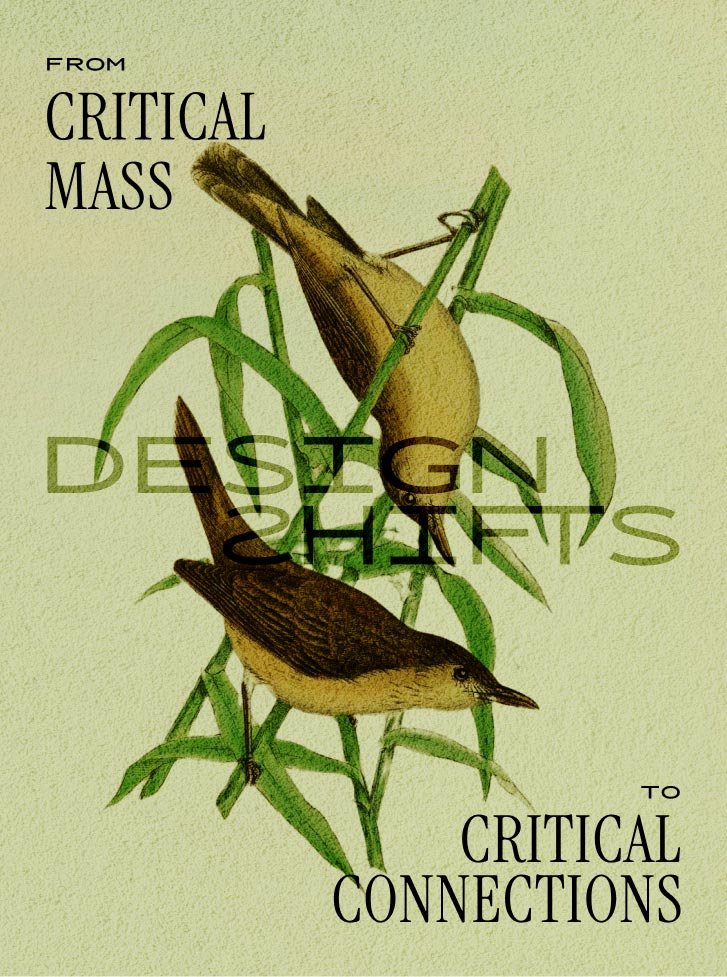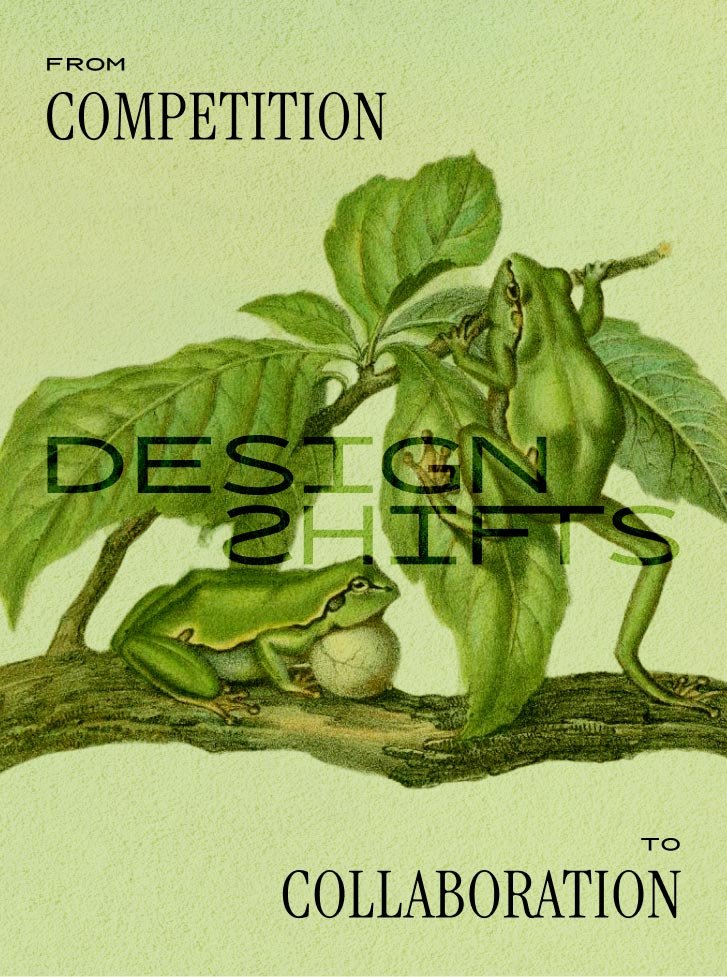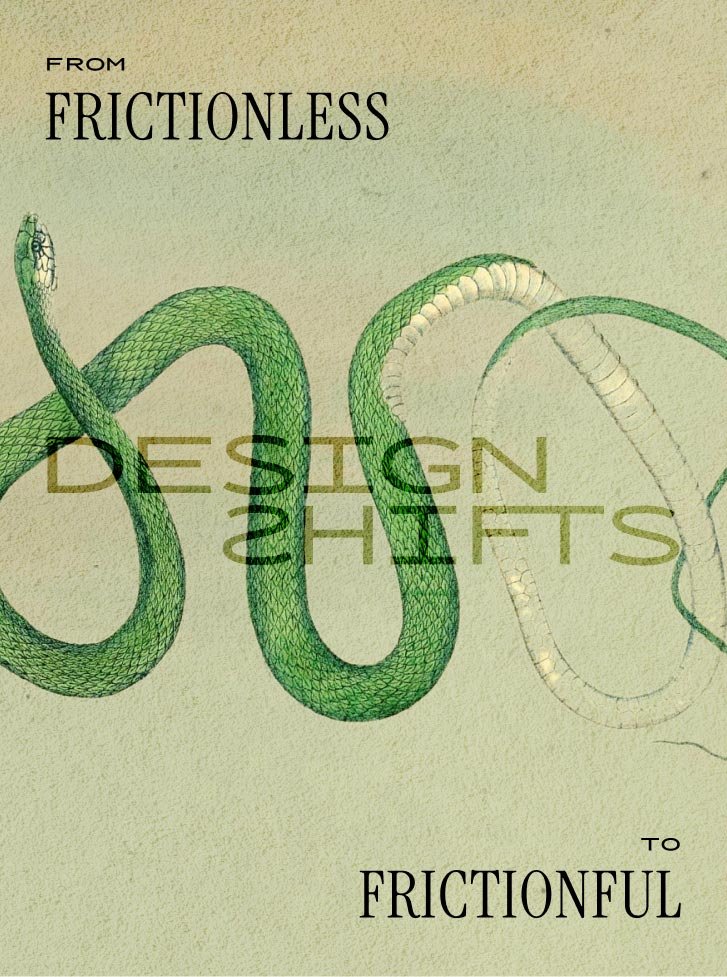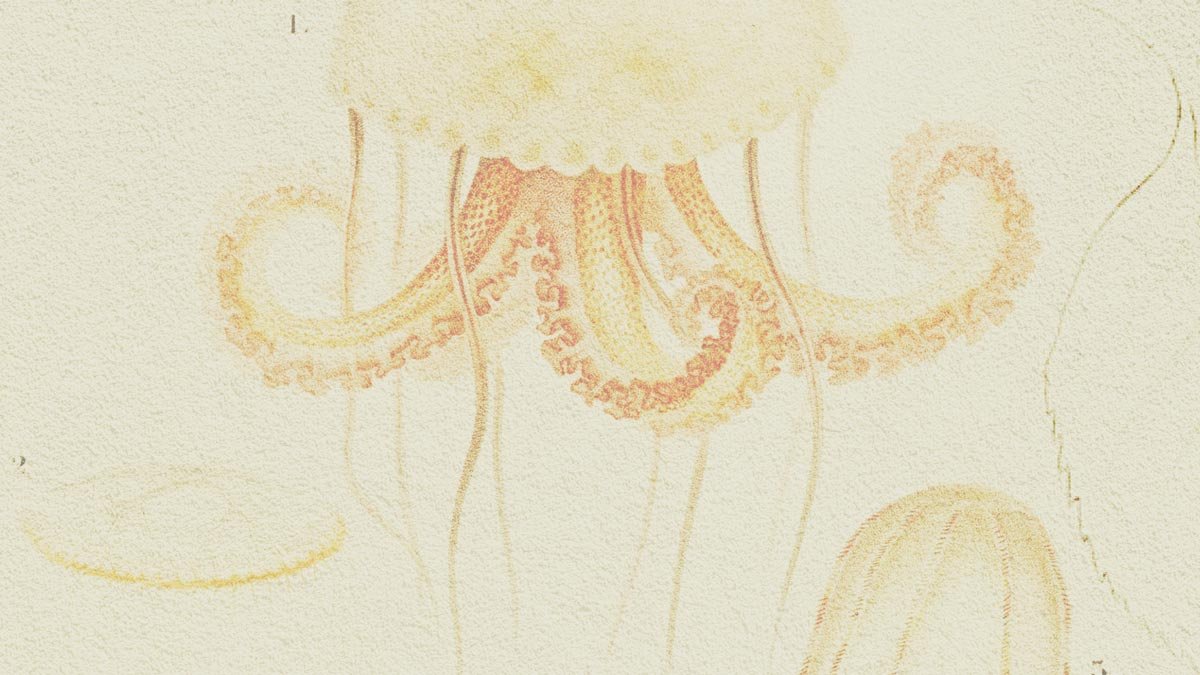Explore DesignShifts
Here, you’ll find the DesignShifts we’re exploring both in theory and in practice. Each topic explores Shifting the posture, power, perspective, practice, and the purpose of design.

DesignShift: From Critical Mass to Critical Connections

DesignShift: From Competition to Collaboration
Working on solutions in the social impact or climate space can feel lonely and frustrating. We’re working within a system rooted in extraction and competition. A system whose very survival depends on things staying the same. However, designing a better tomorrow require us to Shift from competition to collaboration.
Shifting the future for and through design require us to share space, resources, struggles, hopes, and future visions together.

DesignShift: From Frictionless to Frictionful
Good design is frictionless, right?
Designers quickly learn that friction = bad. We spend most of our time trying to remove friction in order improve experiences. However, is this desire for — or should I say obsession with — frictionlessness always a good thing? Can friction actually enrich experiences?
DesignShift: From Frictionless to Frictionful.
Last weekend while hiking up a mountain, Molly Oberholtzer and I started talking about friction and design. She said this:
“We spend so much time making things frictionless, but by making it frictionless we make it forgettable. Friction is often the most memorable part.”
“When you learn that you can handle some friction, you realize you can handle even more. By always trying to reduce even small amounts of friction, we take away our own power to handle hard things.”
Her reflections made me think... As designers, how can friction help us create more memorable experiences? How can it help us do hard things?

Join us!
Sign up for updates on my writing, events, and upcoming courses
